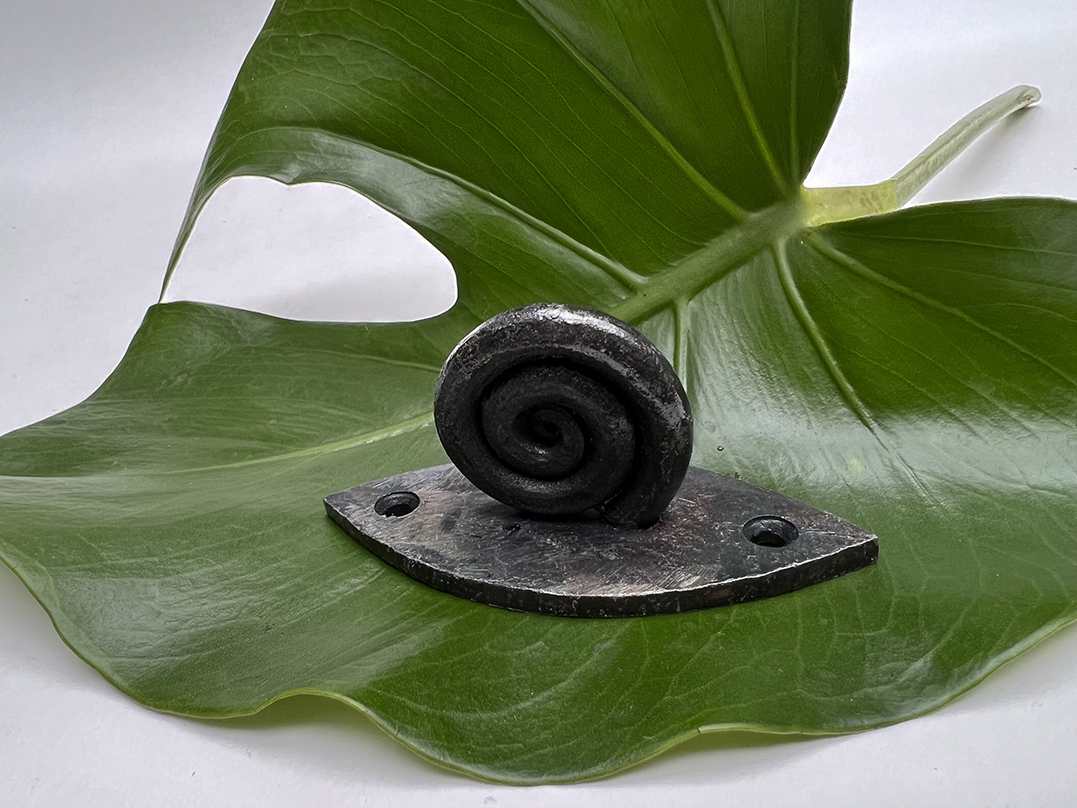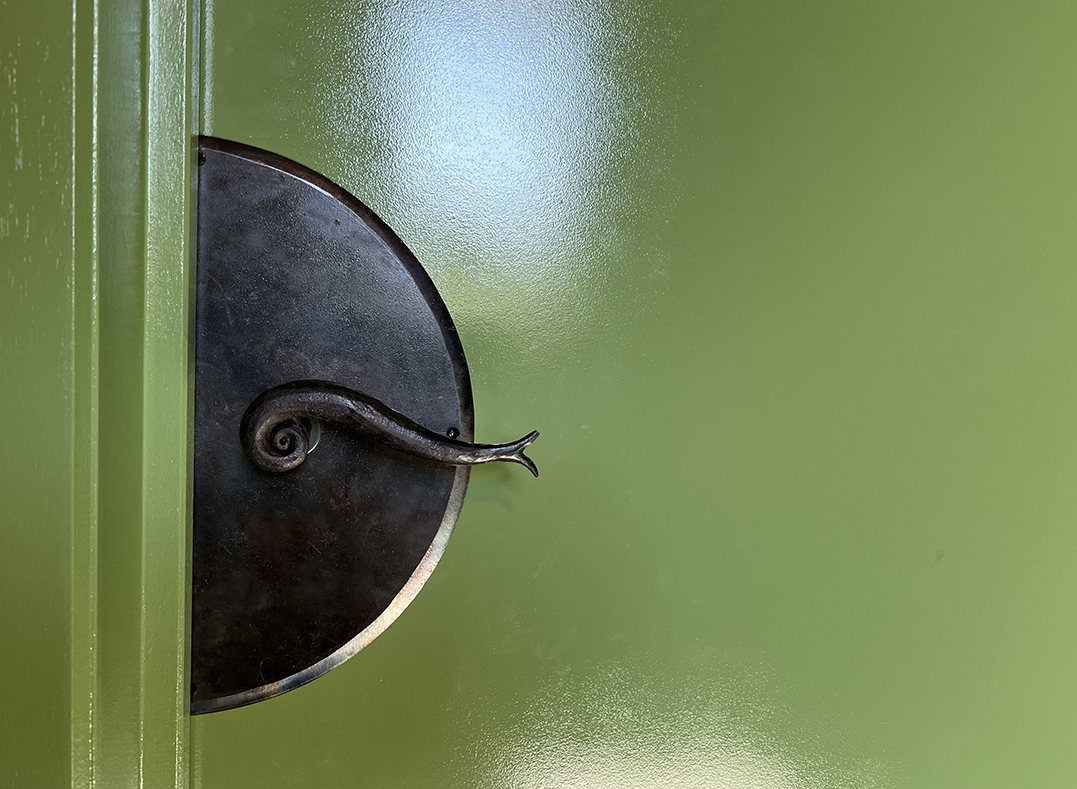
THE LITTLE THINGS THAT CHANGE EVERYTHING:
Odile’s kitchen was sad. Not really ugly, but really sad by dint of being neutral and banal,
a sorry little thing in white laminate. Nothing that encourages, in her cold bosom, to feed properly.
So Odile bought a pot of “absinthe n° 29” colour,
it must be said that Odile is a pretty redhead and that the colour “absinthe” suits her perfectly,
she also chose some “Gazelle” handles for the upper cupboards, and some “Escargots” for the lower ones.
Let’s say it was a spring Sunday, one of those that makes you want to change, so quickly she changed everything,
and everything has really changed : Odile’s kitchen has become cheerful, elegant and funny.
That’s “the little things that change everything”, no need for great expense or great worries to change your life,
there are details that make a world in themselves.
They are always present in daily life, we touch them constantly, and they are most often painfully ugly.
Finally, these little objects are like an insult whispered a hundred times a day,
the trace of a discouraging environment that pursues us even in our personal refuge.
Text written on June 1, 1999 to present the hardware collection

The beauty of objects of everyday life is not measured by their attractiveness alone.
The quality of the material is crucial and this does not depend on its value, even if certain precious materials are irreplaceable.
Only gold is able to capture light with such an intense and mysterious glint.
Above all, gold ages well, as it is by the inevitable ageing of all things that one can measure their quality and their economy.
In fact it is not so much a question of gold’s resistance to ageing, for what is important is to age well rather not to age at all.
Plastics age scarcely at all, to the point that they pollute our seas, but they also age so badly that we discard them.
So savings made at the time of purchase can cost very dear over time.
Touch is an extremely precious sense when working with materials as it makes a very natural selection,
irrespective of aesthetic considerations, between what will be pleasant to live with and what will not.
To date it is only “natural” materials that have been able to pass the test of touch.
Apparently, it is also these materials that best pass the test of time, not necessarily always better resisting its effects,
but simply often becoming more beautiful rather than deteriorating with its passage.
Excerpt from ” Diary of everyday life” fascicle 3 of the book
“By Agnès Emery Par Agnès Emery”
